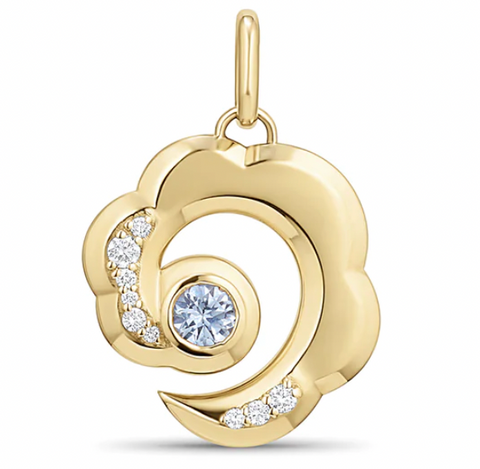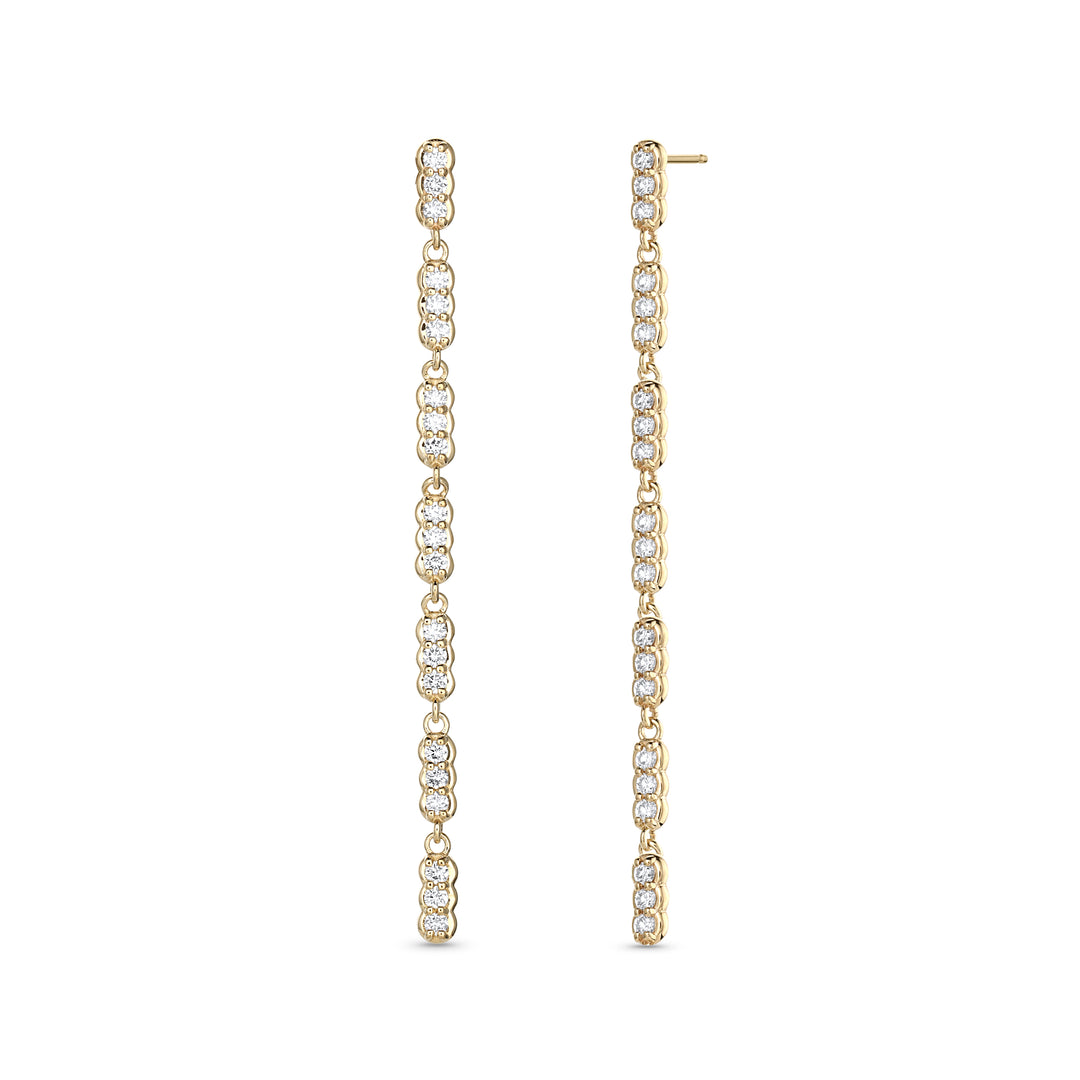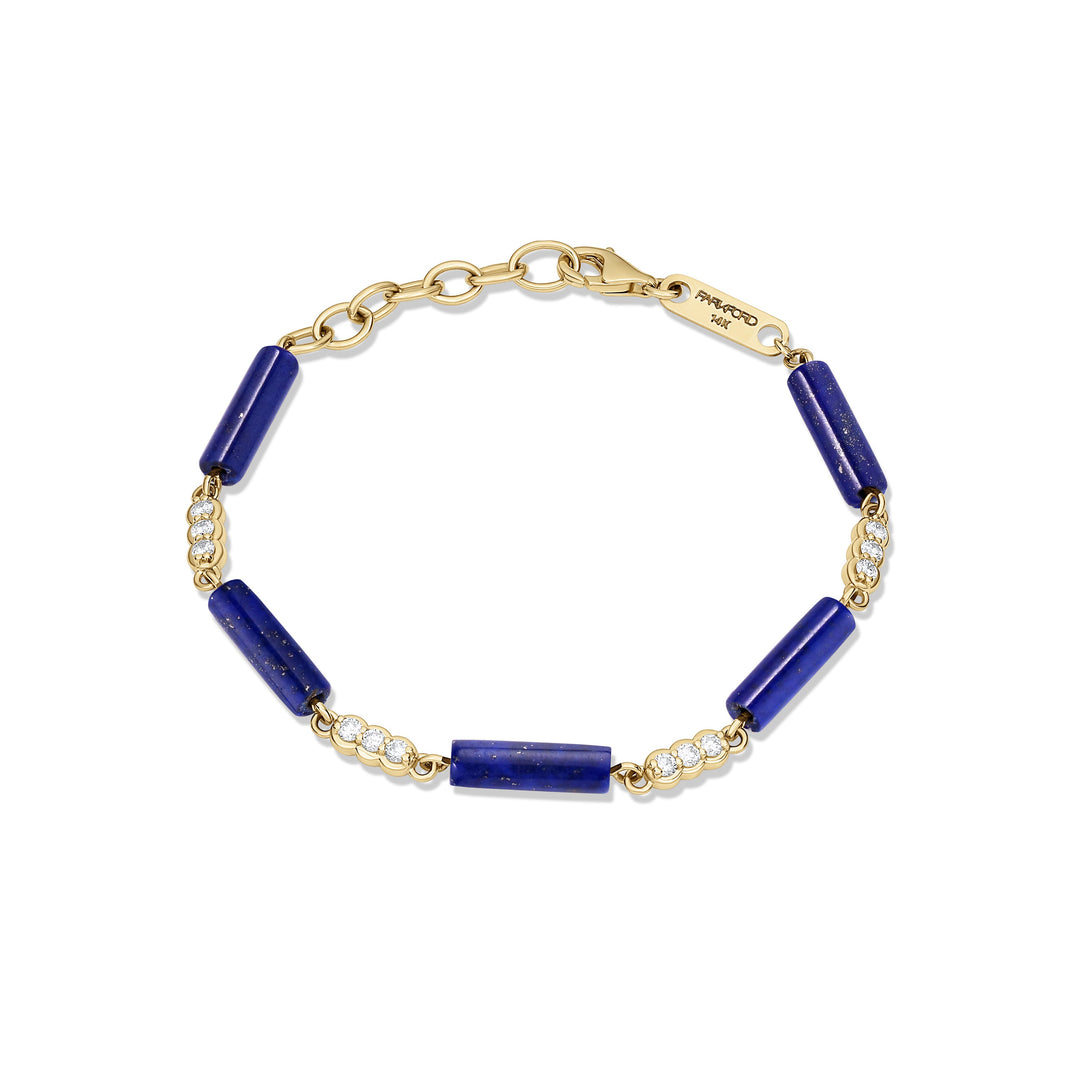All About Sapphires
Sapphires are beautiful and regal, and their color range makes them a versatile gem. They're not only known as the birthstone for September but also as the traditional gift for 25th and 40th wedding anniversaries. The deep blue gemstone symbolizes love, truth, and loyalty, making it an excellent gift choice. They can be worn in many settings and are appropriate for all occasions and moods.
Let’s walk through all there is to know about sapphires, including their history, meaning, colors, how to wear them, sources, composition, and even how to care for them to ensure their beauty stays intact for the ages!
Sapphire Jewelry Meaning and Famous Jewels
Sapphires hold a special place in the world of precious stones, and they've carried symbolic meaning for centuries. These stunning gems have a rich history, often associated with power and wealth. They were so closely tied to royalty in Britain that it's not uncommon to see a blue sapphire in the crown jewels of British kings and queens.
Also, many intriguing stories, myths, and legends revolve around sapphires in various cultures. Take, for example, the "Star of India" or the "Logan Blue Sapphire," which have captivated the world for their exceptional beauty and rarity.
Sapphire Jewels as Charms and Symbols
Many different cultures historically believed sapphires could protect them against witchcraft and evil spirits. However, they also thought sapphires symbolize love, loyalty, and friendship, and that sapphires will bring peace, wisdom, and contentment to whoever wears them.
I guess if you’re protected against witchcraft and evil spirits, you’re bound to find peace and happiness!
The Uniqueness of Sapphire Birthstone Jewelry
But beyond their dazzling beauty, sapphires hold a special place in birthstones — being the birthstone for September. So, when you wear sapphire birthstone jewelry, you're not only adorning yourself with a stunning gem but also embracing the meaningful attributes associated with it.
Sapphire Colors Create Rainbows
Sapphires are indeed nature's way of creating a rainbow in gemstone form. While many of us associate sapphires with that classic blue hue, you'd be amazed to discover their breathtaking array of colors.
Sure, blue sapphires are the ones that often steal the spotlight, but sapphires in all colors are far more versatile. Alongside those blues, you'll find sapphires in stunning shades of green, delicate pinks, sunny yellows, earthy browns, regal purples, vibrant oranges, and even smoky grays. It's like having a piece of the rainbow right in your jewelry collection!
Now, here's the fascinating part: the color of a sapphire depends on the specific minerals present in the stone during its formation. These trace elements can influence the absorption and reflection of light within the gemstone.
These are some of the trace elements and their influence on sapphire color:
- Iron (Fe): Iron can impart various colors to sapphires, including blue, green, and yellow. For instance, iron combined with titanium can produce the classic blue in most blue sapphires.
- Chromium (Cr): Chromium is responsible for the vibrant red color in rubies, which are technically a type of corundum. In small quantities in sapphires, it can create pink or purplish hues.
- Titanium (Ti): Titanium is often associated with blue sapphires. It works with iron to produce the deep blue color commonly seen in sapphires.
- Vanadium (V): Vanadium can also influence the color of sapphires, often resulting in violet or greenish-blue hues.
- Magnesium (Mg): Magnesium can sometimes lead to yellow or greenish-yellow sapphires.
- Rutile Needles: Some sapphires exhibit a phenomenon called asterism, a star-like pattern on the surface. This effect is caused by needle-like inclusions of the mineral rutile, which can create a star-shaped reflection when the stone is cut en cabochon.
By the way… Did you know that rubies and sapphires are different varieties of the same mineral? But while there are many shades of sapphire, there are only red rubies. Rubies belong to a category of their own because they are much rarer than sapphires of any color (just a little ruby trivia for ya…)
What Makes Women’s Sapphire Jewelry So Special?
While other traditional blue gemstones like aquamarine and topaz are beautiful in their own right, sapphires offer a broader spectrum of blue hues — from deep royal blues to enchanting pinks and everything in between. Moreover, sapphires are known for their exceptional durability, ranking high on the Mohs scale, which measures mineral hardness from 10. This means they can withstand the rigors of everyday wear, making them ideal for jewelry, especially pieces meant to be cherished for a lifetime — like bracelets and engagement rings!
Sapphire’s Science Behind the Sparkle
The stone is a variety of the mineral corundum, one of the hardest minerals in existence, right after diamonds. It’s formed where rising molten rock comes in contact with the Earth’s crust; the slower the rock cools, the larger the sapphires will be — not to geek out, but that’s pretty cool! After working its way from the Earth’s mantle, it’s no wonder it’s durable enough to wear every day. Sapphire’s durability is exceptional.
However, beyond their hues, factors like color intensity, clarity, and cut are crucial in determining their quality grade. High-quality sapphires with vivid colors and exceptional clarity are the most sought after and valuable.
When it comes to sapphire jewelry, there's an array of popular cuts, settings, and styles that enhance this gem's beauty. From classic round cuts to elegant princess cuts, women's sapphire jewelry is a vast and diverse world. Whether in our Flora Arc Bracelet, Grand Revival Necklace, or Rainbow Stack Ring, sapphires are exquisite, versatile, and timeless.
Are Sapphires Sourced Locally?
While many sapphires can come from places outside the United States, a little-known fact is that Montana produces a significant quantity of these precious stones. So, whether you're drawn to the classic blue or the entire spectrum of sapphire colors, there's a world of beauty to explore ethically and sustainably right here in the States.

How to Care for Your Sapphire Jewelry?
Taking care of your sapphire jewelry is essential to keep it sparkling and looking beautiful for years. Here's some expert advice for you:
- Cleaning: To clean your sapphire jewelry, use a mild soap and lukewarm water. You can gently scrub the sapphire with a soft brush, like a toothbrush. Then, rinse it thoroughly and dry it with a clean, soft cloth.
- Storage: When you're not wearing your sapphire jewelry, it's a good idea to store it properly. Keep it in a jewelry box with separate compartments or small zipper polybags to prevent scratching.
- Avoid Extreme Conditions: While sapphires are durable, avoiding exposure to extreme conditions is still a good practice. Remove your sapphire jewelry before gardening, working out, or other manual activities to prevent damage. Also, sapphires can be sensitive to sudden temperature changes, so avoid exposing them to rapid heating or cooling — while cooking, for example.
- Regular Check-Ups: It's a good idea to have your sapphire jewelry checked by a jeweler periodically. They can inspect the settings, prongs, and overall condition to ensure everything is secure and in good shape.
- Be Gentle: While sapphires are hard, they can still be chipped or scratched. Be mindful when wearing your sapphire jewelry, and avoid activities where it might come into contact with rough surfaces.
I love sapphires because they come in so many colors and are versatile. They're beautiful, fit in perfectly with any kind of jewelry, and go with everything!
Sapphires FAQ
-
Are rubies and sapphires the same mineral?
Sapphires and rubies are two different kinds of the same mineral. Though sapphire comes in many shades, rubies are red exclusively, making rubies more rare and a separate gemstone category. -
What’s the color of sapphires?
While blue is the most recognized, sapphires come in almost every rainbow color. Many hues of green, yellow, orange, brown, purple, pink, and blue are typical, as well as several shades of grey, from transparent to black. -
Are sapphires good for engagement rings?
Yes, sapphires are an excellent choice for engagement rings. They are among the most popular options for engagement ring gemstones, second only to diamonds for their durability, symbolism, and variety of colors. -
Are sapphires cheaper than diamonds?
Sapphires are often more affordable than diamonds of comparable quality and size. Still, within the diamond and sapphire markets, their price varies depending on the specific gemstone characteristics. -
Are sapphires rare?
Sapphires are more abundant than diamonds and are found in various locations worldwide. This greater availability tends to keep their prices more reasonable. -
Are sapphires rarer than diamonds?
While sapphires are not as rare as other gemstones like diamonds, they are still considered relatively rare compared to many other minerals. The rarity of sapphires can vary significantly based on their color, geographic source, and quality. -
Are sapphires diamonds?
No, sapphires are not diamonds. Sapphires and diamonds are distinct gemstones with different chemical compositions, physical properties, and appearances. -
Are sapphires and emeralds the same?
No, sapphires and emeralds are not the same; they are two different gemstones with distinct characteristics, chemical compositions, hardness levels, and appearances. -
How to choose the best sapphires?
The most valuable sapphires combine exceptional color and clarity with scarcity due to their source or other factors. When shopping for sapphires, prioritize the quality and appearance of the gemstone over its price, ensuring that you select a gem that meets your expectations and feels meaningful to you. -
Are sapphires better than other blue gems?
Sapphires are considered more special than other blue gems for several reasons, including their rarity, durability, history, and symbolism.
You can shop all of ParkFord's sapphire products by visiting this page.













